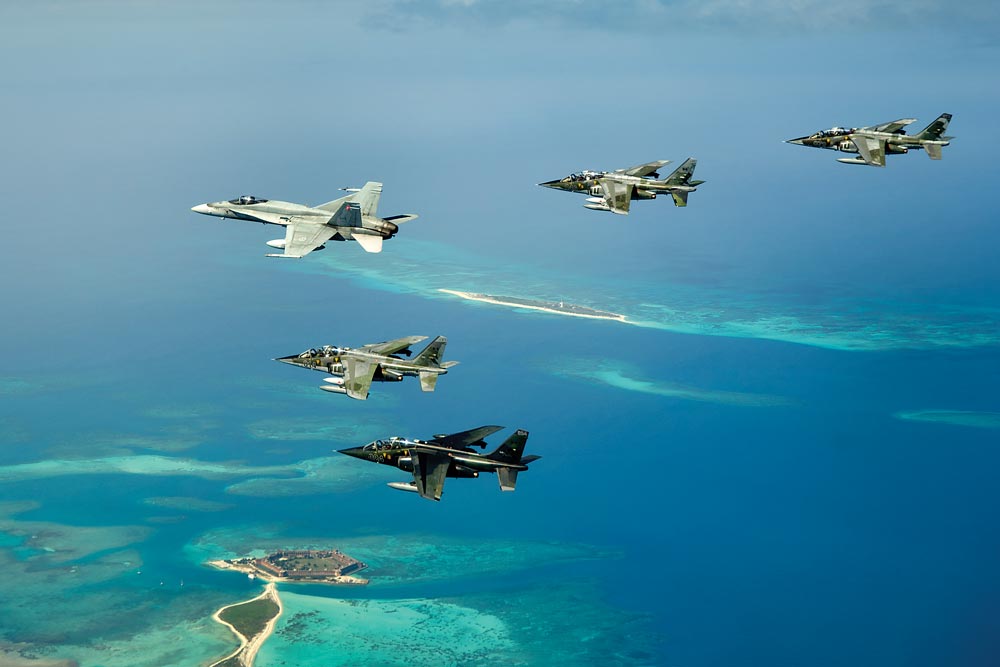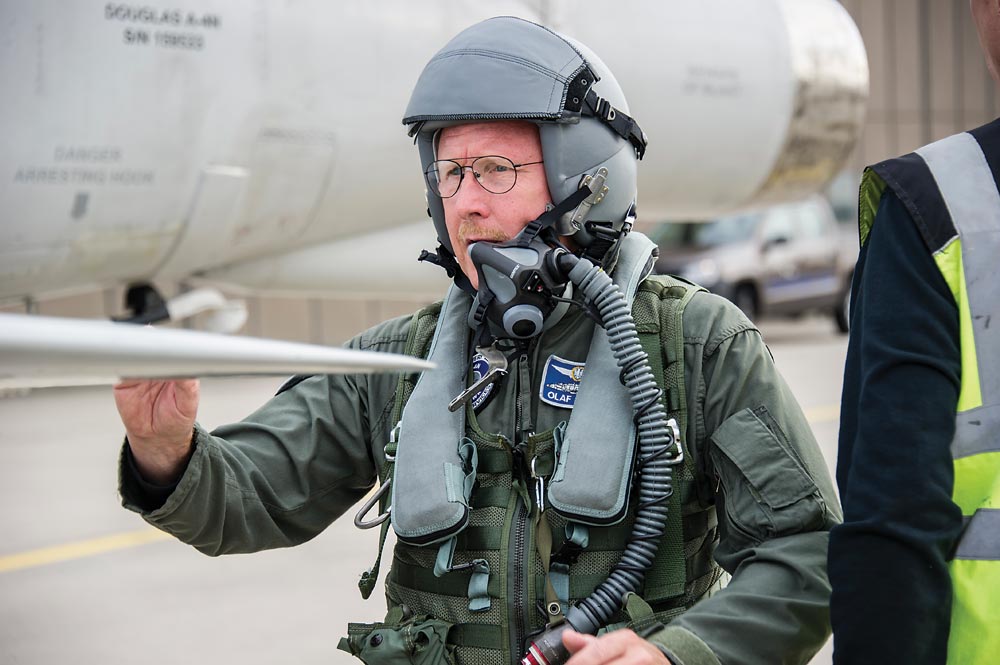Estimated reading time 7 minutes, 30 seconds.
Ask Garry Venman and he’ll tell you that it’s an exciting time to be an air combat training provider.

Venman, who is the executive vice-president of business development and government relations at Discovery Air Defence (DA Defence), spoke to Skies during the 2017 CANSEC tradeshow in Ottawa, hosted by the Canadian Association of Defence and Security Industries (CADSI).
Over the past few years, Montreal-based DA Defence has been active on the international scene, where it has agreements to provide so-called “red air” enemy air services to the German, Austrian and Australian air forces.
In January of 2015, DA Defence began providing contracted airborne training services for the German Armed Forces. The Canadian company has assembled a team of 40 people and a fleet of seven Douglas A-4 Skyhawks to deliver air combat training and combat support, both at home in Germany and on training missions abroad.
“We’re seeing increased demand in Germany, just like we’ve seen in Canada over the lifetime of the ICATS [Interim Contracted Airborne Training Services] program,” said Venman.

A fleet of Alpha Jets and IAI Westwind aircraft belonging to DA Defence is currently providing red air services to the Royal Canadian Air Force (RCAF) through the ICATS program. First awarded in 2005, the agreement has been extended several times, most recently until December 2017.
The company is currently awaiting the Canadian government’s decision on a permanent award for the Contracted Airborne Training Services (CATS) program, which could be worth up to $1.5 billion. The government is now evaluating bids, among them DA Defence submissions, for the provision of complete red air services simulating hostile threats for the Army, Navy and Air Force for a period of at least 10 years.
The project includes training for joint terminal attack controllers (JTAC) and electronic warfare training for aircrews, land forces, aerospace weapons controllers, and navy frigates.
Turnkey service
While DA Defence currently flies the A-4 in Germany, Venman said he anticipates a future demand for something more–perhaps the fourth-generation F-16. It’s the same with Austria, where air-to-air gunnery training was completed with that country’s air force in May 2017.
“It’s a small program but a step in the right direction,” said Venman of the Austrian agreement. “There’s a recognition that the services are valuable. It’s a turnkey service and they don’t have to go out and buy a fleet of aircraft and then stand up squadrons and all the infrastructure that goes with them.”

Another highlight of the past year is a two-year Australian contract for red air and fighter support services. Announced in March 2017, the “Jet Air Support – Fast Jet Trial” program consists of three upgraded Alpha Jets that will provide support services to the Australian air force, army and navy. Set to begin in the third quarter of 2017, Venman said the first Alpha Jet had just arrived in Australia on May 31, with the other two aircraft soon to follow.
“Australia is dipping its toe into the contracted air training market but it’s a full spectrum program: air to air, air to ground, and support to the maritime community,” he explained.
But while international programs are highly prized, Venman said success abroad starts at home.
“We’re waiting for a decision on the long-term CATS contract. That’s important for us because it signals long-term stability to the market. We continue to deliver services under the interim program, but a long-term stable contract with guaranteed minimums changes the tone of the whole operation,” he said.
Other real opportunities could be found with the U.S. Air Force (USAF), the U.S. Navy (USN) and Britain’s Royal Air Force (RAF).
“The USAF plans on releasing an RFP sometime this year, with a draft in July and the actual RFP later this year. It will involve 50,000 hours of flying, which is 10 times the size of CATS. You’re talking 120 or 160 airplanes. The USAF is being smart about this. They recognize that no one company will show up with that many planes, so they will make a multiple contract award to any qualified supplier.”
Canada’s high airworthiness standards make its contracted airborne services model especially attractive to the RAF, which Venman said is defining the acquisition for a program that will be two or three times the size of CATS.
He believes the one market segment in aviation that will experience significant growth in the coming years will be the delivery of operational training services using military aircraft owned by a commercial service provider. Canada was the first among NATO countries to adopt this structure following budget cutbacks in the 1990s, putting it more than a decade ahead of the curve.
Now, “they’re all moving towards this model,” said Venman. “This market is exploding and the real excitement for us is the growth that is happening in this space. There are very few high quality service providers in the world and one of them is right here in Canada.”
With a total of 240 staff, DA Defence is making the investments necessary to capitalize on the growing demand for aggressor air services.
“One of our messages to government is that this is about innovation,” Venman continued. “We offer a lot of value. The business model is changing and we’re creating the infrastructure to field these capabilities. Canada must recognize this is a market that’s growing.”
In terms of the upcoming Defence Policy Review, to be released on June 7, he said he’d like to see an acknowledgement that long-term, stable defence investment is critical.
“Canada has to step up to the plate and fight high-end missions; we need equipment and training to be a credible fighter force,” he concluded.









So let me guess this squared, you honestly think that DoS will grant TPT and where necessary GOPEA to a Canadian commercial entity? More likely that either ATAC, Draken or TacAIr would be the preferred operators of those defence articles, even then the restrictions on use would be very tight indeed.